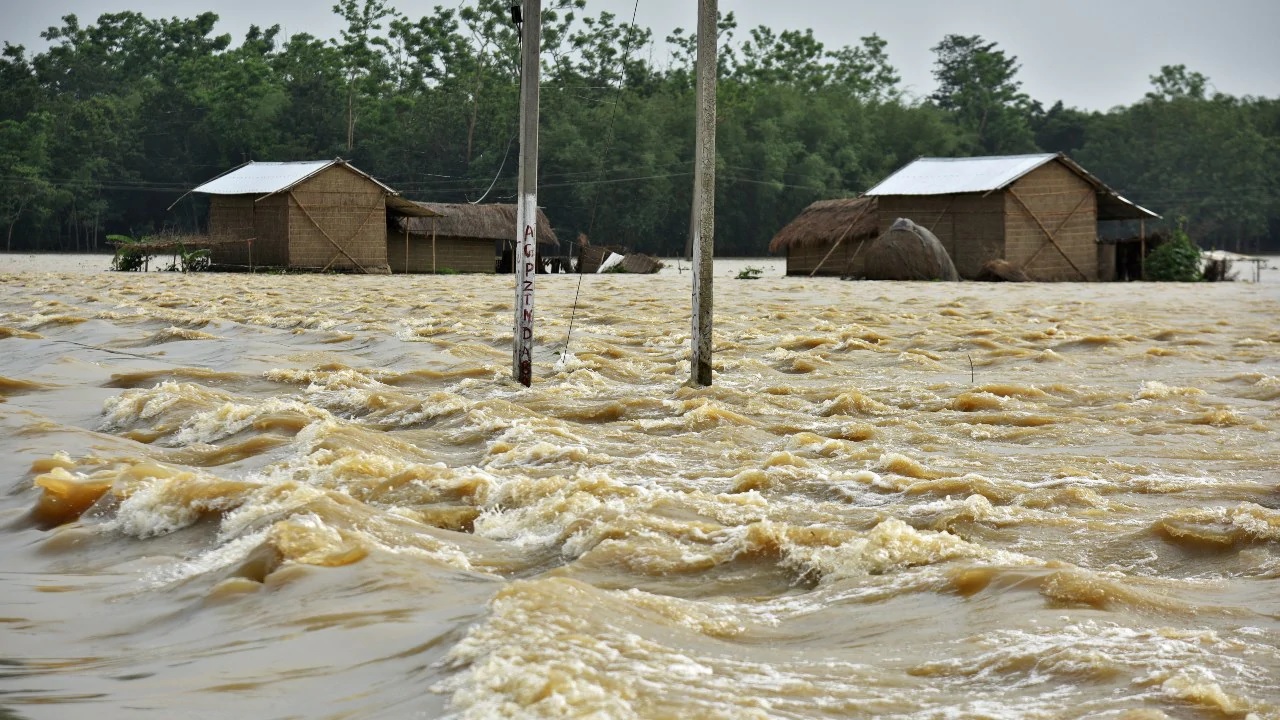I like to believe that “Luitor pani jabi o boi (Go flowing on, waters of the Luit)”, a song by Assam’s foremost cultural icon, Jyoti Prasad Agarwala, is still one of the first songs someone learns if he/she has had any roots in the region. Agarwala’s beautiful lilting tune follows the waves of a relatively calm river flowing “with its golden waters at dusk”. The Brahmaputra, endearingly called the Luit or the burha Luit (the old Luit), is so much a part of every soul living in the valley that no narrative on Assam is ever complete without mentioning this mighty and often unpredictable cohabitant. As Arupjyoti Saikia reminds us in The Unquiet River, not only does the river occupy a pre-eminent position in the Assamese cultural imagination, chronicles and folklore but it also has a life beyond its waters, certainly beyond the designs of kings or colonial rulers, beyond the utilitarian fantasies of river engineers and the portrayals of dreamy landscapes by balladeers. It is this life of the Brahmaputra or, more precisely, its distinctive unquietness that the book attempts to trace. Its troubled relations with power and politics for centuries constitute the core of the story that Saikia tells us. To call it a historical account would be inadequate, since it is something like a biography in its full complexity. Yet, that neither takes away from the river its organic attributes nor endows it with human characteristics, as Saikia stressed in a recent interview. The biography, in its final form, is an exploration into how a river shapes the destiny of an entire region and how the powers that be, in turn, try to shape its course, often unsuccessfully or with pernicious consequences.
The book mostly centres on the history of the river for the last thousand years, especially the gradual becoming of its floodplains, tributaries, highlands and foothills during the pre-colonial and colonial times. Taking cognizance of the Hindu-Buddhist mythological narratives, traditional oral tales and various explorers’ evolving accounts, it was — not unsurprisingly — James Rennell, the first surveyor general of Bengal, who tried to trace the river’s course and origins in the eighteenth century. In the late nineteenth century, with such ingenious explorers as Nain Singh, Kintup, Sarat Chandra Das and Kisen Singh among others, expeditions from Tibet and India seemed to converge on the hitherto unknown geographical facets of the river.
Although many of the quests were directly sponsored or encouraged by the East India Company, these were certainly not meant to be confined to the newly-acquired knowledge about a river — however majestic — or its intractable movements. Profits from commercial tea cultivation were too alluring a prospect, and the colonialists left no stone unturned to establish an economy based on plantation. Apart from clearing up, domesticating the wild tea plant, fighting with blights and other pests and plant sicknesses, fervent labour recruitment drives began. The famine-stricken parts of eastern and central India became the government’s favourite hunting ground along with a few other places. There also, the Brahmaputra played a key role in both upstream journeying of hired workers and downstream sailings of tea chests. In the case of jute cultivation, the British government encouraged peasant settlers from eastern Bengal who had migrated on their own and were reclaiming the wastelands and low-lying areas. With the economic downturn of the 1940s, the famine of 1943, and the Partition, the influx kept increasing steadily. But now the migrants had to face competition from Assamese, Bodo and other tribal workers from the tea gardens whose contracts had expired. The roots of political turmoil in Assam that has assumed such humongous proportions over the decades can, legitimately, be traced back to such enterprises. Jute in the floodplains and tea in the uplands thus came to symbolize the British imperial conquests, which broadened the already existing multi-ethnic, multi-lingual base of Assam while also preparing grounds for conflict.
This history is not entirely unknown. But Saikia brings in fresher dimensions. Ironically, flood-related devastations made the Brahmaputra a national river, and there was never any dearth of governmental efforts to rein it in. For the colonial government, the familiar trope was ‘conquering’ a river. In Jawaharlal Nehru’s India, this morphed into containing an otherwise noble ‘friend’ who behaves wrongly at certain points. Embankments, dams and the entry of private capital were either welcomed or resisted by the ruling elites, environmentalists and indigenous people, giving rise to a new set of clashes based on class and ethnocentricity. More recently, India has geared up its hydroelectric and other river-engineering investments in the Brahmaputra, almost echoing Chinese ambitions from the other side of the border and paving the way for new transnational political narratives. Saikia warns that these efforts will lead to a totally uncertain destiny (I am willing to read that as ecological disasters). For despite the wounds, alterations and lacerations inflicted upon it for centuries, the Brahmaputra is too invincible a river to stay within the limits imposed by others. Its fury can be disquietingly unfailing.
The Unquiet River: A biography of the Brahmaputra By Arupjyoti Saikia, Oxford, Rs 1,195










